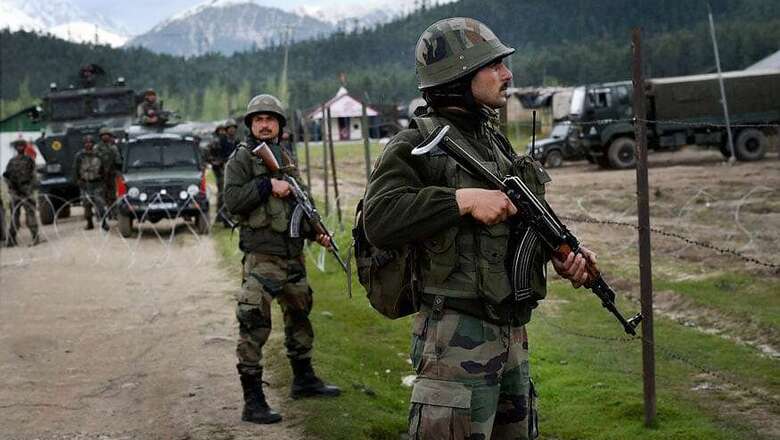
views
In 1992, the RAND Corporation published a paper by Dr. George Tanham, an American defense analyst, titled Indian Strategic Thought: An Interpretive Essay. One of Tanham’s key observations was, “Although India has, over time, developed elements of a defense strategy…it has produced little formal strategic thinking and planning.”
The recent restructuring of the national security architecture, with the creation of the Defence Planning Committee (DPC) and a reconstituted Strategic Policy Group (SPG), is being seen as a step towards correcting our weaknesses in strategic planning. The DPC is headed by the National Security Advisor (NSA) and comprises the three service chiefs, and the foreign, defence and expenditure secretaries. The DPC is tasked to prepare a national security strategy and development plans for the armed forces. The DPC will submit its reports to the Defence Minister.
The revamped SPG, earlier headed by the Cabinet secretary, will now be led by the NSA. The NSA is also the primary advisor to the National Security Council (NSC) whose members are the Prime Minister, and ministers of Home, Defence, External Affairs and Finance. Many experts have brought out that this concentration of authority for strategic planning in the office of the NSA will reverse the silo-based method that has characterised our approach and will ensure a comprehensive and coordinated planning effort.
Others are more critical. Shekhar Gupta writes that the “formal centralisation of authority with the Prime Minister, marginalisation of traditional structures, destruction of checks and balances, is rude.” Happymon Jacob, in an editorial, wrote that while the SPG and DPC “might provide a little more coordination in decision making”, it is clear “that these committees are hardly sufficient to get the country’s national security system back on track.”
In all this discussion, one crucial aspect that has escaped attention is the impact of the recent restructuring on the nature of civil-military relations. In my view, the existing weakness in civil-military relations in India will be further exacerbated with the new security structure, and this will have an adverse impact on strategic planning.
In any democracy, there will always be a certain amount of tension present in civil-military relations. Peter D Feaver describes this ‘civil-military problematique’ as “a simple paradox: The very institution created to protect the polity is given sufficient power to become a threat to the polity.” It is for this reason that much of the debate on civil-military relations is concentrated on how the civilian leadership should exercise control over the military so that it does not intrude into the political space.
However, civil-military relations have a huge influence on all aspects of national security. Risa Brooks, in her book ‘Shaping Strategy: The Civil-Military Politics of Strategic Assessment’, argues that the nature of civil-military relations has a major impact on how nations carry out strategic assessment when faced with crises involving the use of military force. Strategic assessment is vital for harmonizing political and military objectives and reconciling the ends and means. A poor assessment can lead to a devastating loss, as witnessed in the 1962 India-China war.
Brooks lists two variables that affect the pattern of civil-military relations – the balance of power between politicians and military, and the degree of preference divergence. In India the balance of power is clear. Democracy has strong roots and the politician has unquestioned authority. The second variable is the degree of divergence between the political and military class. Divergence could be on security goals or on the military strategy and plans to achieve these objectives. It could also be on corporate issues like budgets, promotions, code of conduct, military ethos and the way of working.
The degree of civil-military divergence in India is high. This is evident in recent issues like the implementation of the ‘One Rank One Pension’, the initial refusal of the military to accept the award of the 7th Pay Commission and the unseemly spat over the status equivalence with civilian officers in the Ministry of Defence. There are differences between the military and political leadership over the size of the budget required for modernization of the military. There is also a view, though not openly expressed, that the traditional Indian military ethic is being diluted and politicised with the army being dragged into numerous political debates.
In a situation where there is political dominance but high preference divergence, Brooks points to two tactics that could be employed by political leaders to ensure military compliance. The first of these is to “circumscribe their chiefs’ participation in advisory processes, a priori discount their opinions, and instead privilege other sources of information.” The second is to “appoint like-minded officials to key posts” by replacing “dissenting officials with individuals that tend to agree with them on strategic, security, and corporate issues.” While this serves to establish political supremacy, “ultimately this undermines the debate and rigor of analysis.”
All governments in the past have tended to use one or both of these tactics and keep the military leadership out of the advisory process. This is clearly reflected in Indian structures for strategic decision making. The NSC has no military members. The NSC is assisted by the SPG that is now chaired by the NSA and comprises the three Chiefs and various secretaries in the government. There is no political representation in this group. The third structure of NSC is the National Security Advisory Board that comprises experts from outside the government. It is clear that there is no forum where the political leadership can regularly interact with military leaders to take benefit of their expertise on strategic issues.
The gap in military-political interaction will only grow with the creation of the DPC where the NSA has been placed as a layer between the Defence Minister and the Service Chiefs. The NSA will now function as the de facto Chief of Defence Staff and the essential requirement of a senior military advisor to the political leadership has been cast aside. This is in stark contrast to the practice followed by most democracies around the world where the principal military adviser is always the highest-ranking military officer.
The military is not entirely blameless for the current state of civil-military relations. Service parochialism has resulted in each service emphasizing its own importance and requirements without considering the larger strategic picture. This has damaged the credibility of military advice. After Israel’s war of independence, Prime Minister David Ben-Gurion had said, "The most dangerous enemy to Israel's security is the intellectual inertia of those who are responsible for security." Unless the military leadership can offer unblemished professional counsel, it will not find itself on the high table.
Politics and war are completely intertwined. While war may be too important to be left to the generals, it would be a folly to ignore their expertise and intimate knowledge of military capabilities. Samuel Huntington, in his seminal work The Soldier and the State, says, “Nations that fail to develop a balanced pattern of civil-military relations squander their resources and run uncalculated risks.” Tinkering with structures tasked to develop national security strategies will only have a limited benefit unless we are able to adequately address the larger issue of poor civil-military relations in India.
(The author is former Northern Commander, Indian Army, under whose leadership India carried out surgical strikes against Pakistan in 2016. Views are personal.)




















Comments
0 comment